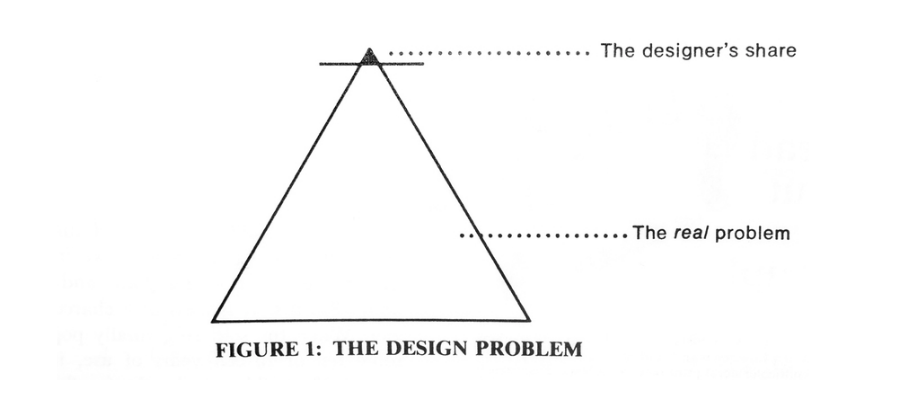Victor Papanek’s book includes an introduction written by R. Buckminster Fuller, Carbondale, Illinois. (Sadly, the Thames & Hudson 2019 Third Edition does not include this introduction. Monoskop has preserved the following text as a PDF file of images. I have transcribed a portion below.)
In this book, Victor Papanek speaks about everything as design. I agree with that and will elaborate on it in my own way.
To me the word “design” can mean either a weightless, metaphysical conception or a physical pattern. I tend to differentiate between design as a subjective experience, i.e., designs which affect me and produce involuntary and often subconscious reactions, in contradistinction to the designs that I undertake objectively in response to stimuli. What I elect to do consciously is objective design. When we say there is a design, it indicates that an intellect has organized events into discrete and conceptual inter-patternings. Snowflakes are design, crystals are design, music is design, and the electromagnetic spectrum of which the rainbow colors are but one millionth of its range is design; planets, stars, galaxies, and their contained behaviours such as the periodical regularities of the chemical elements are all design-accomplishments. If a DNA-RNA genetic code programs the design of roses, elephants, and bees, we will have to ask what intellect designed the DNA-RNA code as well as the atoms and molecules which implement the coded programs.
The opposite of design is chaos. Design is intelligent or intelligible. Most of the design subjectively experienced by humans is a priori the design of sea waves, winds, birds, animals, grasses, flowers, rocks, mosquitoes, spiders, salmon, crabs, and flying fish. Humans are confronted with an a priori, comprehensive, designing intellect which for instance has designed the sustenance of life on the planet we call earth through the primary impoundment of Sun energy on Earth by the photosynthetic functioning of vegetation, during which process all the by-product gases given off by the vegetation are designed to be the specific chemical gases essential to sustaining all mammalian life on Earth, and when these gases are consumed by the mammals, they in turn are transformed again by chemical combining and disassociations, to product the by-product gases essential to the regeneration of the vegetation, thus completing a totally regenerative ecological design cycle.
If one realizes that the universe is sum-totally an evolutionary design integrity, then one may be prone to acknowledge that an a priori intellect of infinitely vast considerateness and competence is everywhere and everywhere overwhelmingly manifest.
In view of a number of discoveries such as the ecological regeneration manifest in the mammalian-vegetation interexchange of gases, we can comprehend why responsibly thinking humans have time and again throughout the ages come to acknowledge a supra-human omniscience and omnipotence.
The self-regenerative scenario universe is an a prior design integrity. The universe is everywhere, and continually, manifesting an intellectual integrity which inherently comprehends all macro-micro event patterning and how to employ that information objectively with omni-consideration of all inter-effects and reactions. The universe manifests an extraordinary aggregate of generalized principles, none of which contradict one another and all of which are inter-accommodative, with some of the inter-accommodations exhibiting high exponential levels of synergetic surprise. Some of them involve fourth-power geometrical levels of energy interactions.
